|
BULB LOG 08 20th February 2008
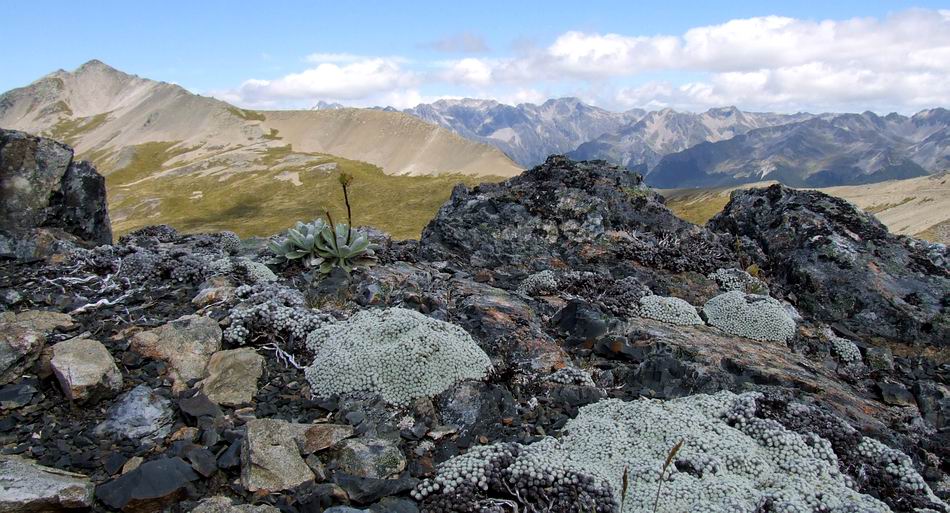
New Zealand
Well here I am back in Aberdeen after the most magnificent trip to New Zealand. I was treated so well and was privileged to visit so many diverse habitats in my short stay - thank you to all who were a part of my trip. As you can see above the plants and scenery were spectacular and if you want to see more check out my holiday snaps on the forum.
>http://www.srgc.org.uk/smf/index.php?topic=1383.0
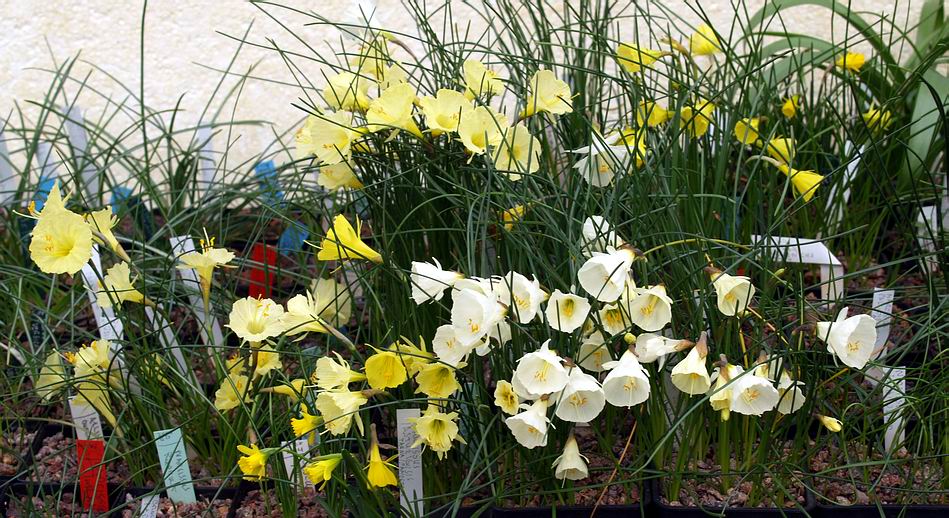
Narcissus selection
One of my talks at the Up High Down Under Conference was on Narcissus and what was awaiting my return to Aberdeen ? A host of golden daffodils. My absence for nearly a month just serves to remind me how fast these spring flowering bulbs can grow. When you are looking at them everyday and sometimes several times a day you do not always appreciate just how quickly they can put on growth and boy, have they grown. This is just a small selection of the many that are now out and the bottom right hand quarter of the picture is taken up with the lovely Narcissus 'Don Stead'. Raised by Don Stead it is a hybrid between N. cantabricus and N.bulbocodium. Don, along with his wife Joan, was a great grower of bulbs and offered me much encouragement in my early days - he raised several narcissus hybrids which are still going around in Scotland at least.
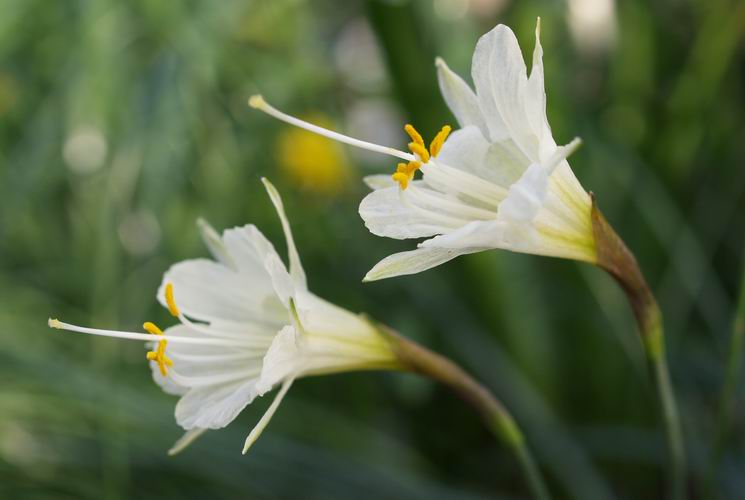
Narcissus hybrid 'Joan Stead'
Here is another of Don's hybrids - this is the one that I call 'Joan Stead' although I am struggling to get it increased to sufficient numbers to distribute. I think it requires a warmer drier period after the flowers fade so I have marked it out to receive no direct watering into the pot after flowering - it will get sufficient moisture from the sand bed it is sitting on.
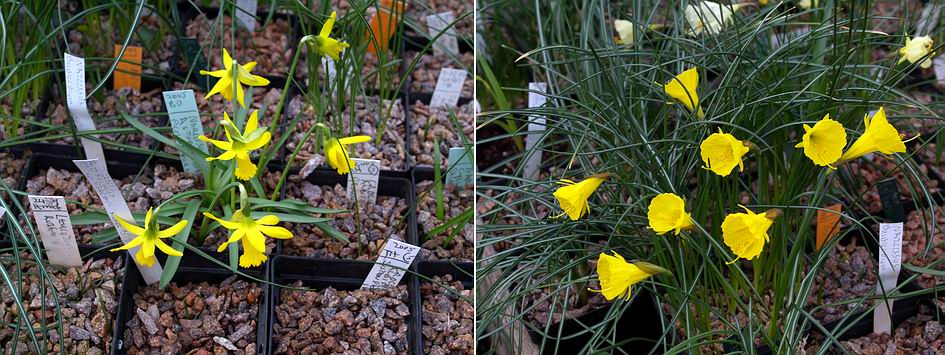
Narcissus asturiensis and bulbocodium hybrid
The lovely dwarf deep yellow bulbocodium hybrid on the right is yet another of Don's crosses . I have no idea what the parents are, I can only make guesses.
On the left is Narcissus asturiensis a real gem of a narcissus and one that I am building up a collection of clones and forms of. This one was derives from the Picos de Europa.
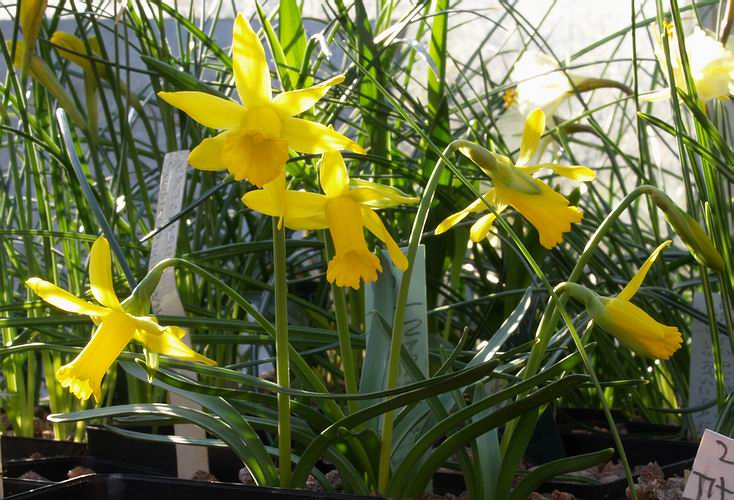
Narcissus asturiensis form
Here it is in close up - it is a perfect trumpet daffodil in miniature. Although I grow most of them in pots I also have some planted outside where they grow well but are very liable to get eaten by slugs and snails.
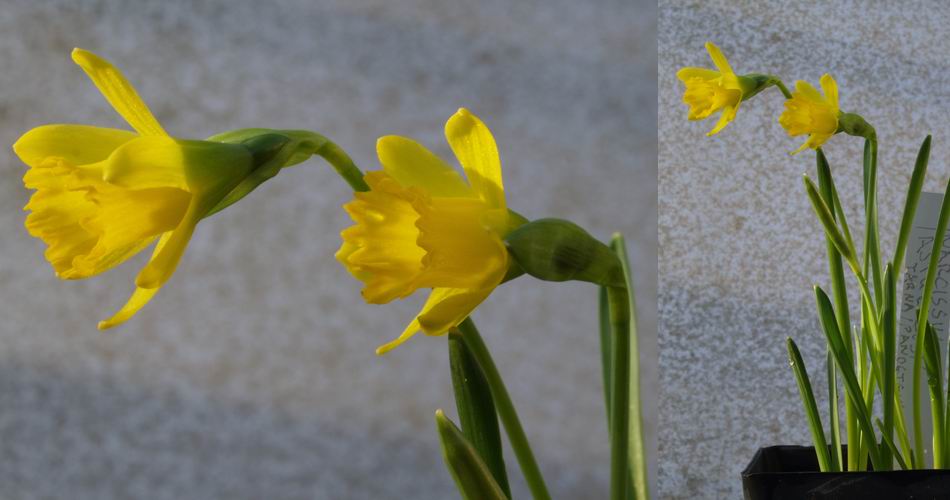
Narcissus asturiensis
Another form of Narcissus asturiensis with smaller flowers on taller stems hails from Tarna/Pandeteve. I am cross pollinating these different forms of Narcissus asturiensis in the hope of raising a really reliable strain suitable for the garden.
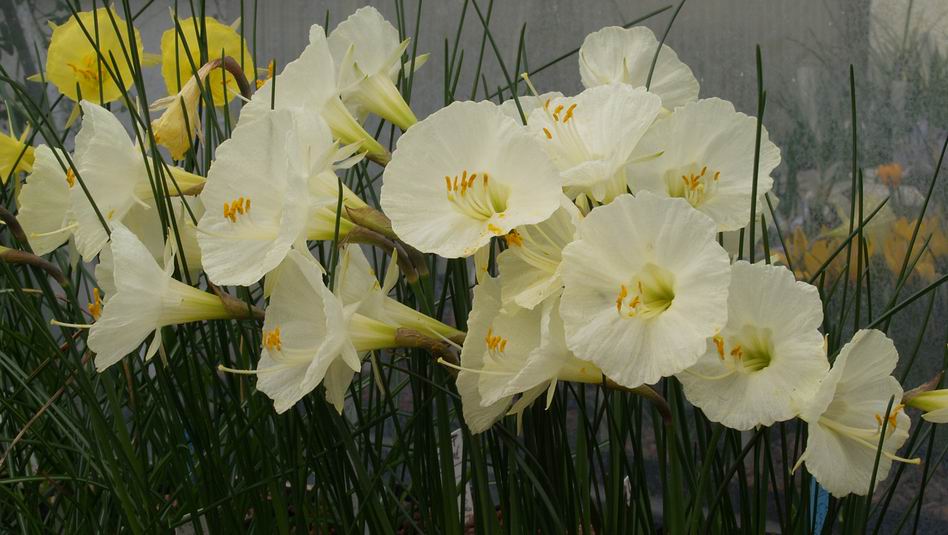
Narcissus romieuxii JCA805
One of the best introductions of Narcissus romieuxii has to be from the collection JCA805. Introduced by Jim Archibald many years ago we still grow some vegetatively propagated material and it is still going strong not to mention the thousands of second, third,
.. generations of seedlings that are in cultivation. The widely flared almost petunioid corona forms are stunning.
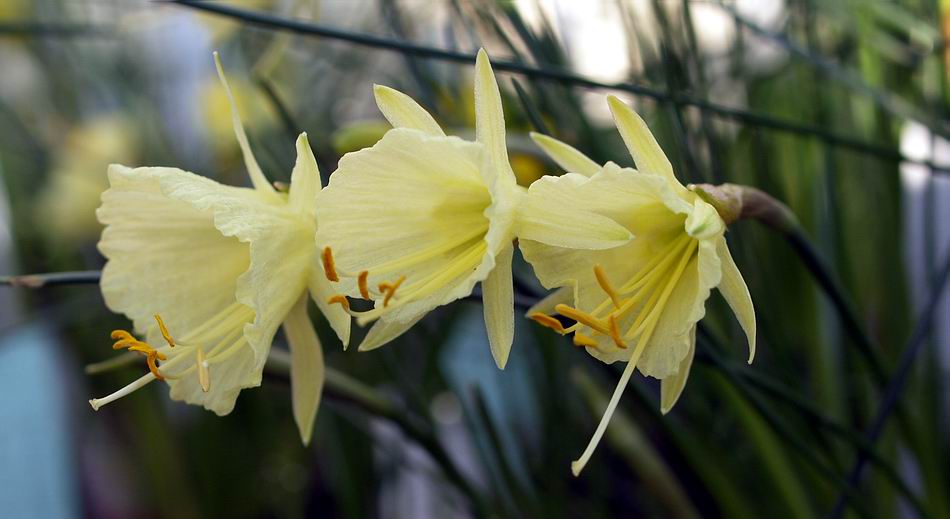
Narcissus romieuxii
Another form of Narcissus romieuxii, which shows the variability of forms that we have, is just as lovely. This whole section of Narcissus is a nightmare to try and sort out and despite the best (or worst) efforts of the taxonomists it does not get any better. The plants are speciating at such a rate that it is difficult to classify them - some speak of hybrid swarms in the wild and I favour that opinion. That is certainly the case in cultivation where we grow so many of the bulbocodium section together that hybrids abound and it becomes even more difficult to sort them out than it is in the wild.
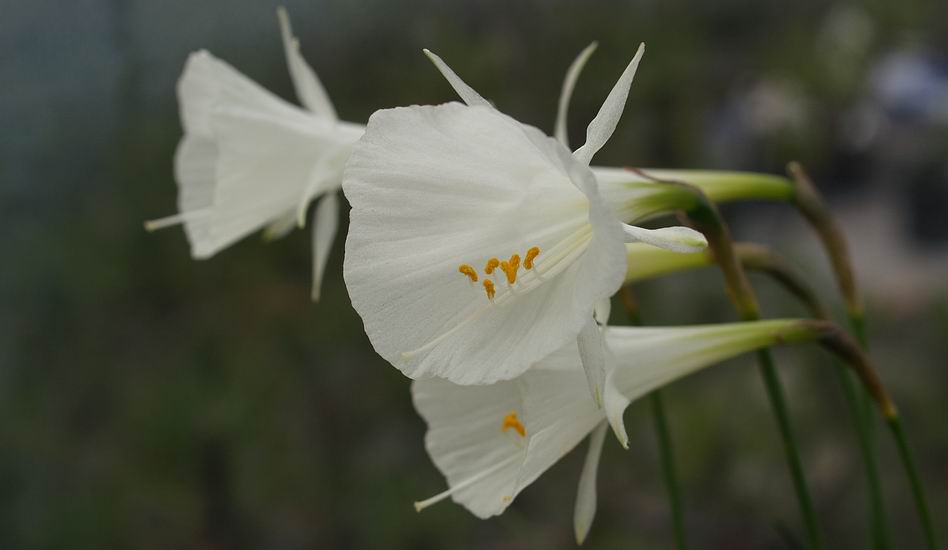
Narcissus romieuxii ssp albidus var zaianicus
For instance I cannot understand why this plant, Narcissus romieuxii ssp albidus var zaianicus, is not considered a form of N. cantabricus? Whatever the problems we have in sorting out the correct names and relationships between all these plants we can enjoy their great beauty, flowering as they do, at a time when few other plants have dared.
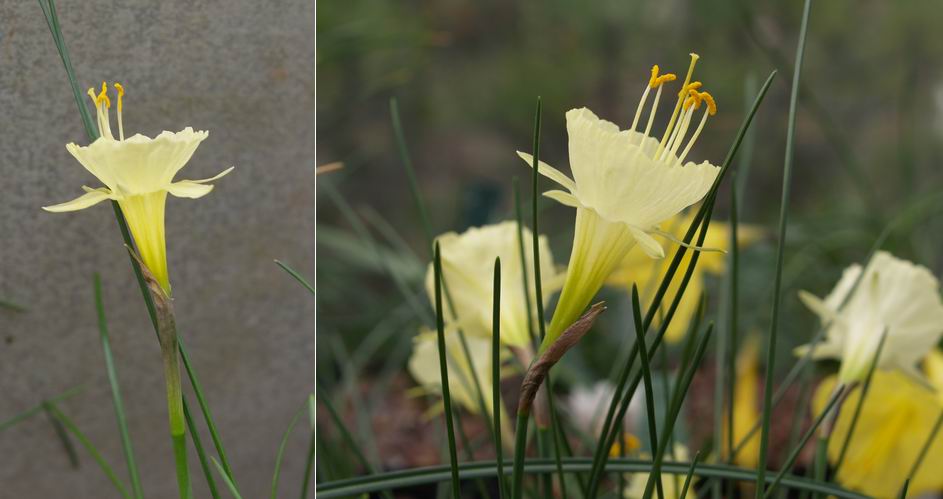
Narcissus romieuxii rifanus and 'Craigton Gem'
One other confusion before I move on- Narcissus romieuxii rifanus on the left is distinguished partly by its upward facing flowers and scattered exerted anthers. On the right is one of my seedlings that I named 'Craigton Gem' at first glance it looks very similar to rifanus but note the length of the pedicel on rifanus, on the left; it is several mm long while 'Craigton Gem' has virtually no pedicel at all. The pedicel is the short flower stem that rises from the top of the main stem (scape) to the back of the ovary - it is inside the spathe but the length can still be seen. Pedicel length is one of the taxonomic diagnostics.
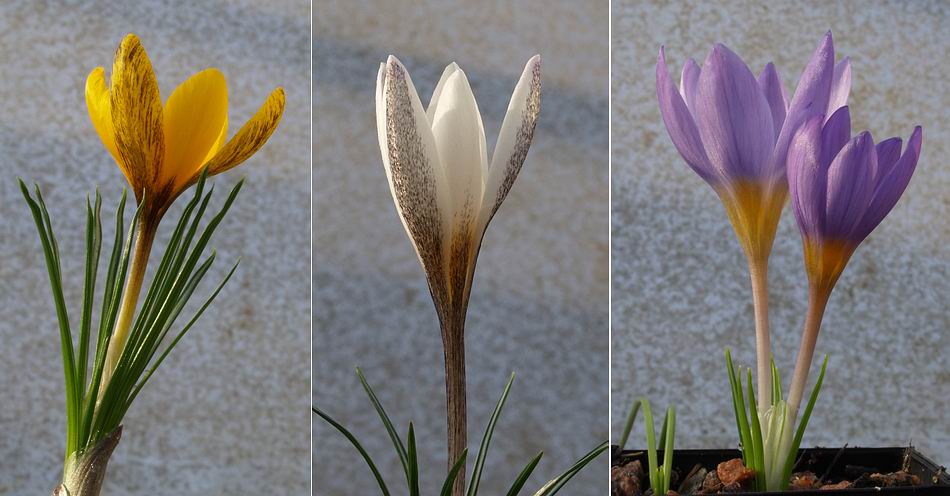
Crocus korolkowii, alatavicus and sieberi nivalis
It was not just the Narcissus that were putting on a flower-power display on my return Crocus were also evident. Here are Crocus korolkowii, alatavicus and sieberi nivalis - oh do I love crocus.
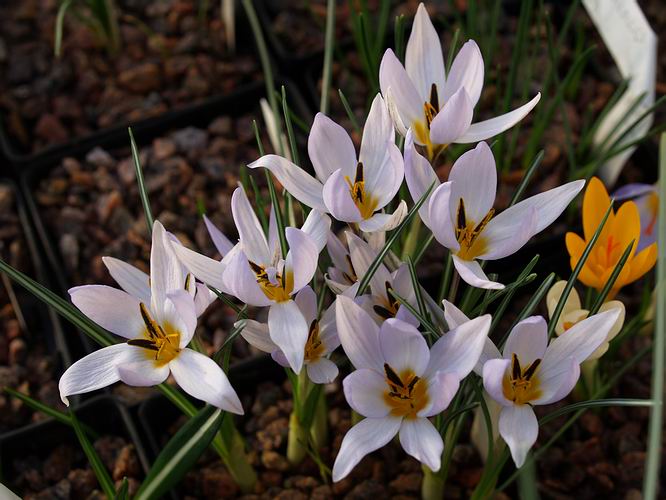
Crocus biflorus melantherus
The very first flowers of Crocus biflorus melantherus were just coming through before I left but now they are fully out and almost going over. Notice that the black anthers, typical of this sub species, still have golden yellow pollen when they burst open.
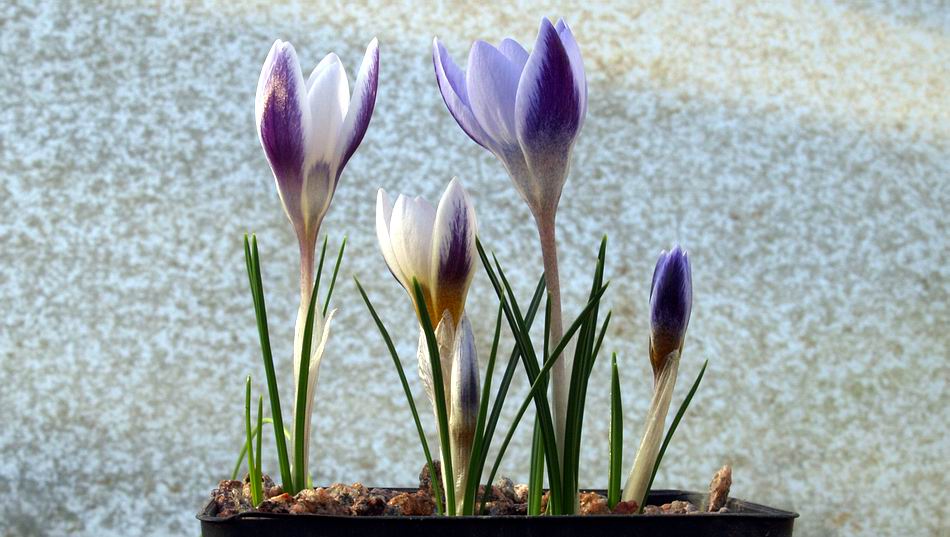
Crocus biflorus alexandri.
The first flowers on this pot of Crocus biflorus alexandri seedlings sown in October 2005 shows some of the variation in colour and markings that you can get when you raise your bulbs from seed.
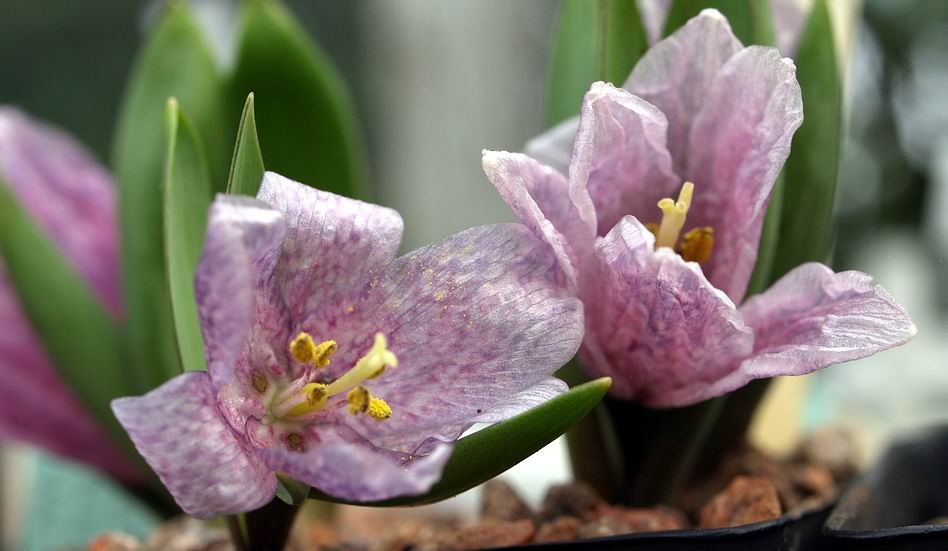
Fritillaria alburyana
Not to be outdone, Fritillaria alburyana wanted to be the first frit to welcome me back home.
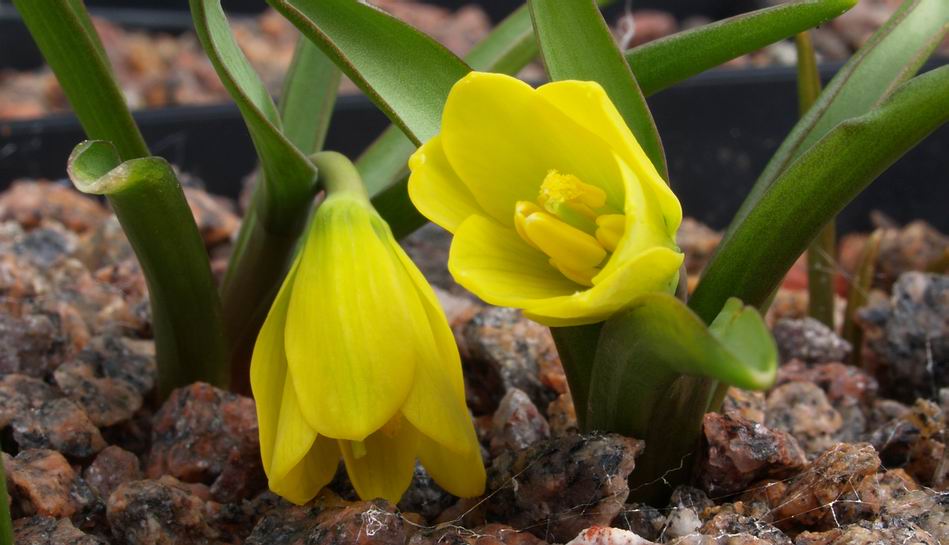
Fritillaria pudica
But it was not alone as the North American species Fritillaria pudica was also in flower. These are two of my favourite fritillaries representing two groups, one from the old world and one from the new. I have to say that Fritillaria pudica is much easier to please in cultivation flowering reliably every year. Fritillaria alburyana has a habit of trying to open its flowers before they come through the ground - this is due to our fluctuating temperatures. To perform to its best it needs a long cold winter followed by a sudden warm spring with a plentiful supply of water - provided by the melting snow in its mountain home.
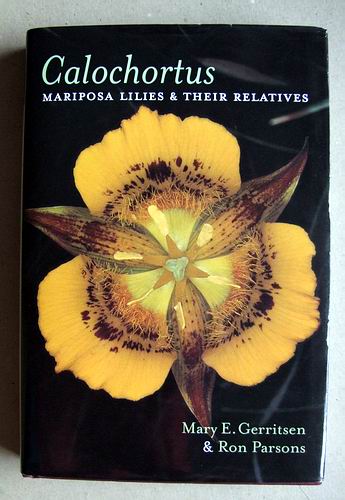
Calochortus book review
Also waiting for me when I got back home was a book on Calochortus to review. I am always tentative when asked to review a book as I love books and especially when they are on bulbs but I am always a bit worried that I will not like the book and have to find some way to be constructive in my criticism.
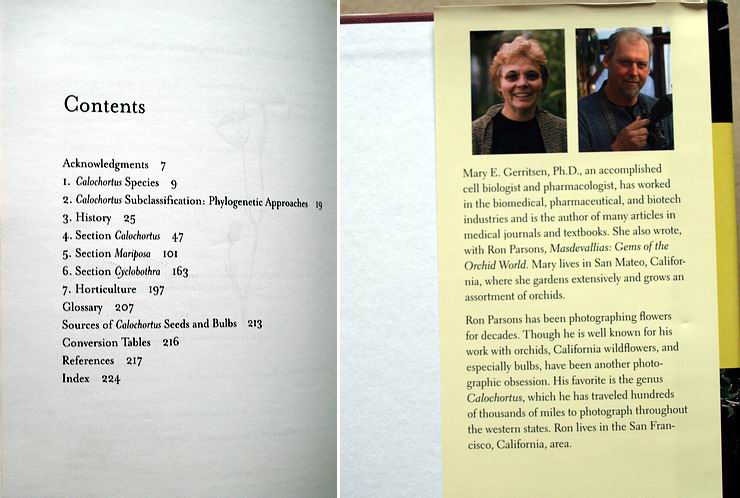
Contents and Authors
This is not the case with Calochortus by Mary E Gerritsen and Ron Parsons : it is a super book. A quick look at the chapters listed in the contents page shows that the authors have covered almost every detail in the 232 pages - the history of those who discovered the plants is 20 pages long and includes names of people that I have seen before but the author has filled in some valuable background that I did not know plus introduced me to more plantspeople of the past.
The plants' own family tree is well covered in an excellent chapter on the phylogeny which puts a complicated subject over in simple terms that should not scare away even a simple gardener.
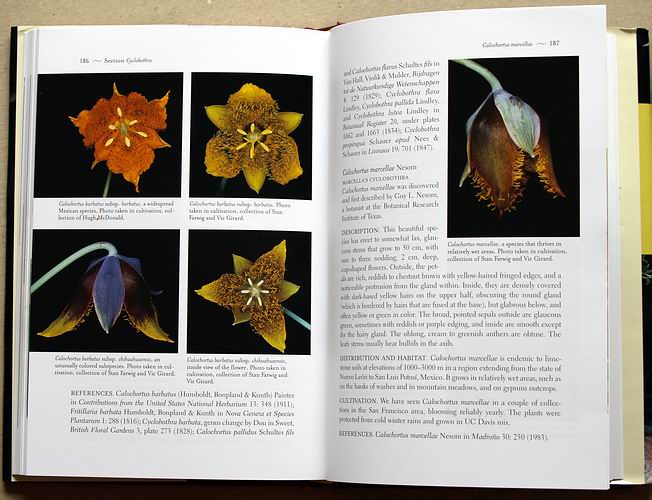
Well Illustrated
It is Mary Gerristen who is the writer while Ron Parsons' excellent photographs are used extensively to illustrate this beautiful genus of bulbs. Pictures showing close up details looking directly into the flowers are great aids when trying to identify the
different species as they show much of the taxonomic information required.
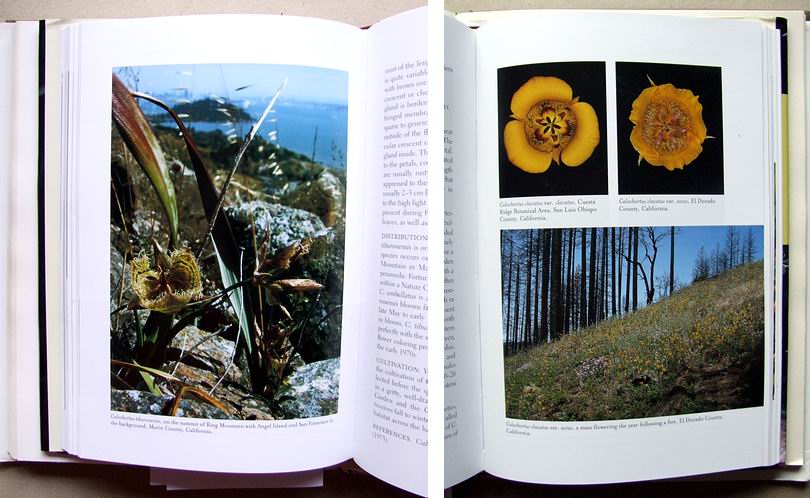
Habitat pictures
As well as the flower portraits there are a good number of habitat pictures showing the plants natural surroundings.
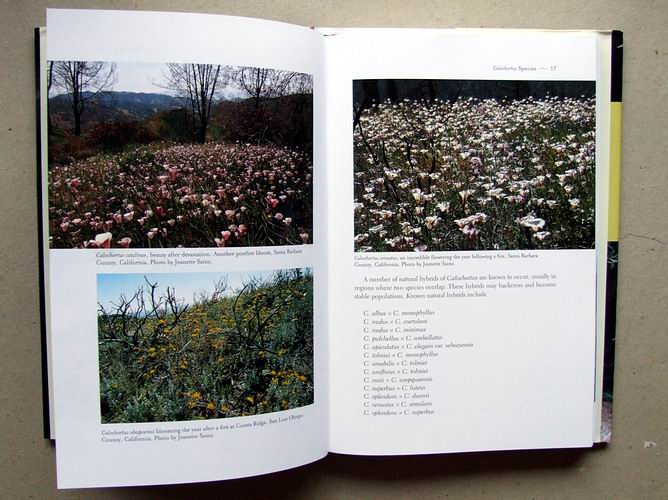
Growing in the wild
The profusion of some of these wild populations is fantastic and we are told how these mass flowerings often follow a period of fire.
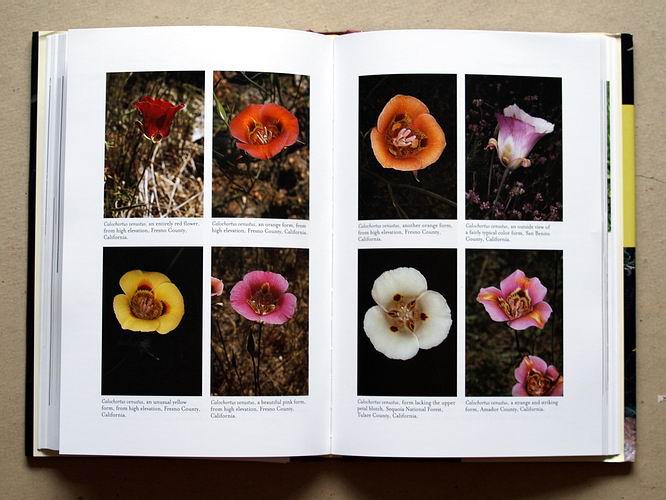
Calochortus venustus
The largest section of the book is given over to a detailed description of all known taxa described methodically under Description, Distribution and Habitat, Cultivation and References. This is a very logical and clear way to describe the different species and even though there is no key to the species in the book it very easy to compare different species in these chapters if you want to work out the identities of your plants. If you do not know this genus then prepare to be amazed by their beauty and diversity perhaps best illustrated by over four pages of colour variations of just one, admittedly the most variable species - Calochortus venustus.
A short chapter on cultivation gives some valuable tips and suggestions for suitable soil mixes but best of all is the list of 'Growing Conditions for Calochortus Species'. This does just what it suggests and describes the conditions you should try and provide to grow each species successfully - such as 'C. albus - Late autumn, winter and early spring moisture, summer drought'.
Altogether I think this is a first-rate book: an excellent monograph for the expert that will also prove invaluable guide to any grower wishing to try and raise some of these beauties. In the distant past I have tried to grow many of the species, now I just grow C. uniflorus but I am inspired by this book to get seeds and have another go with a wider range. I am sure all bulb lovers will enjoy this book even if you do not intend to grow them but be warned once you see their beauty and read about them
..
Published by Timber Press, ISBN-13: 978-0-88192-844-0, at £20.00, $29.95.
^ back to the top ^
|

